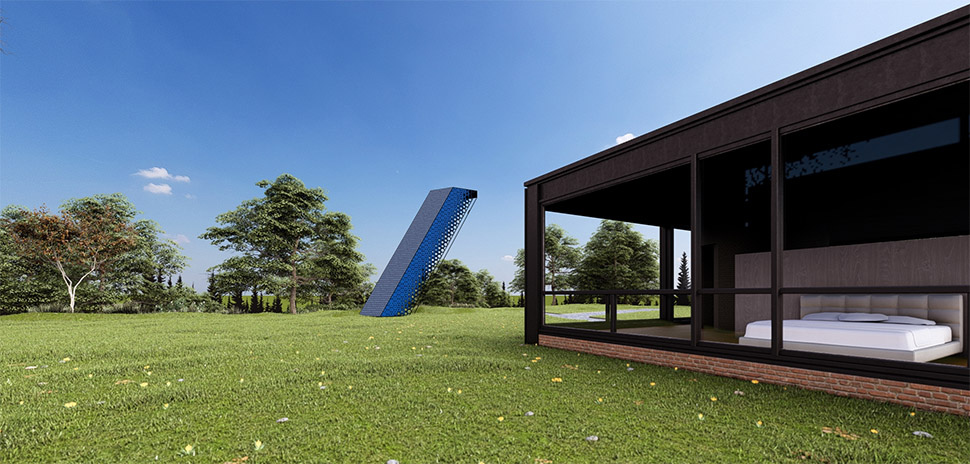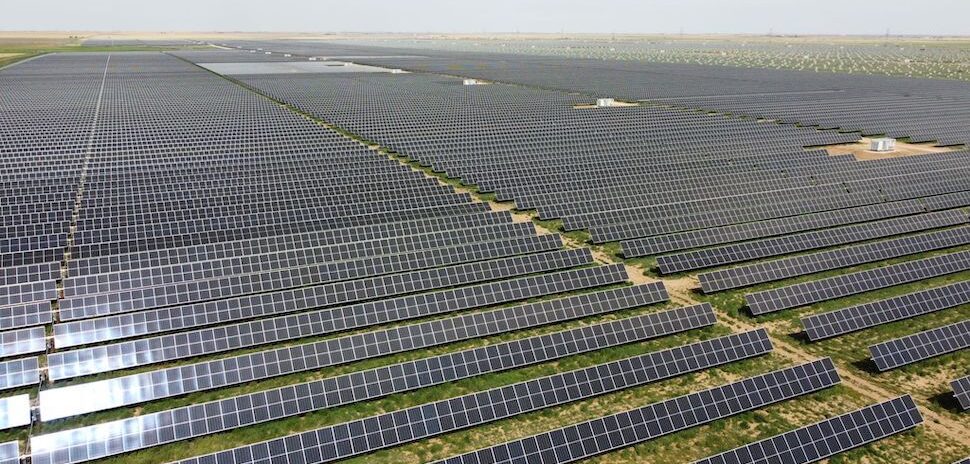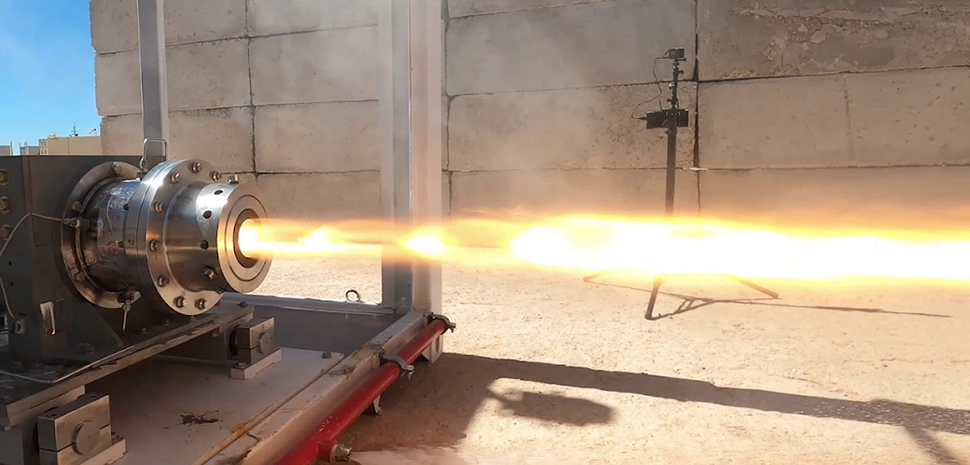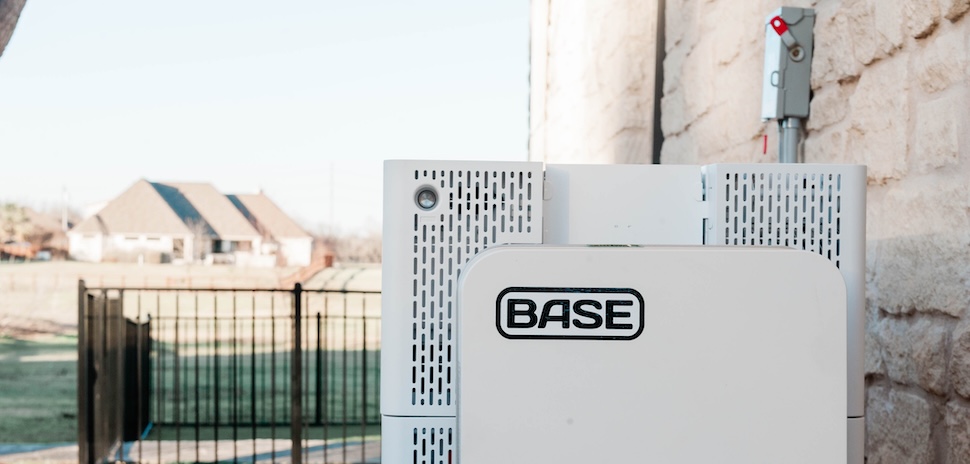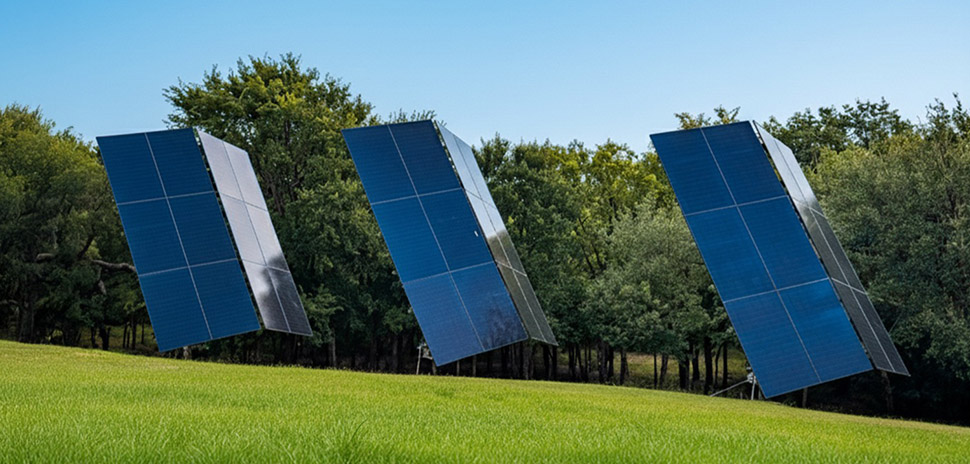
Janta Power’s 3D Solar Towers [Photo: Janta Power]
Janta Power—a Dallas-based developer of innovative three-dimensional solar tower systems—has closed a $5.5 million seed round led by Los Angeles-based MaC Venture Capital, with participation from Atlanta’s Collab Capital. The funding will be used accelerate the commercialization of Janta’s patented, high-density 3D photovoltaic tower technology, the startup said.

Mohammed Njies
Janta said the seed funding will support product scale-up and deployments across data centers, EV charging hubs, telecom towers, universities, and a range of industrial facilities.
Unlike traditional flat-panel solar systems, Janta’s vertical solar towers are engineered to generate around 50% more energy while using one-third of the land area, overcoming energy-density and siting constraints that have limited conventional solar.
Janta is led by Founder and CEO Mohammed Njies, a former research analyst at SMU’s Hunter & Stephanie Hunt Institute for Engineering & Humanity and a former Grand Challenges scholar at SMU’s Lyle School of Engineering.
“The world’s accelerating demand for energy requires innovation that’s both powerful and space-efficient,” Njies wrote on LinkedIn last week, ” and our 3D solar towers were built for exactly this moment.”
Njies called his company’s seed round funders “visionary, sector-defining investors who understand where clean energy must go next. We are building that future together.”
Pilot programs underway at airports worldwide
The company said pilot programs are underway at major global airports, including Dallas–Fort Worth International Airport, Munich International Airport, and a partnership with Aena, which operates over 70 airports worldwide. The pilots are being conducted as part of the Airports for Innovation initiative.
Janta said its “patented tower geometry” achieves around three times the solar surface area exposure of traditional flat arrays within the same land footprint. Each tower’s stacked vertical design captures both low-angle morning and evening light, producing a dual-peak power curve that better aligns with real energy demand, the company added.
Active shading optimization and control software are key ingredients of the towers’ success, the company said. Typical installations achieve a capacity factor of ~32%, compared to ~22% for flat panels.
The towers hold up to wind, the company added. Each one is engineered to withstand winds of at least 110 miles per hour and as much as 170 mph. The structures feature steel construction and modular helical or pier foundations that eliminate the need for extensive grading.
Smoothing energy delivery throughout the day
Unlike single-axis trackers that concentrate output near midday, Janta says its 3D configuration smooths energy delivery throughout the day—”reducing ramp stress on grids and lowering reliance on peaker plants.” The towers’ unique generation profile “complements conventional solar and enhances overall grid stability,” the company added.
Janta Power says its solar solution can currently achieve a Levelized Cost of Energy (LCOE) as low as $0.05/kWh, compared to the global average of approximately $0.15/kWh.
The company said it aims to continue to scale and optimize its manufacturing and deployment processes, with a goal of further reducing that LCOE “in the next few years.”
Rethinking ‘what solar can do’
MaC Venture Capital said Janta Power is addressing one of the biggest challenges in renewable energy—efficiency.
“Their 3D solar tower technology delivers up to three times the efficiency of traditional solar panels while using a fraction of the footprint, making solar power scalable for more industries and communities around the world,” the VC firm wrote on LinkedIn. “As the demand for energy continues to rise globally, Janta’s innovation represents a major leap forward in clean, accessible power.”
In its own statement on LinkedIn, Collab Capital said the future of clean energy “will be built by companies that rethink what solar can do. For decades, flat panels defined the industry. Now, innovators like Janta Power are showing that solar can be both more powerful and more adaptable to the world’s growing energy needs.”
Janta Power is partnering with leading enterprises, airports, and businesses to advance the adoption of its compact, high-efficiency renewable energy systems.
Don’t miss what’s next. Subscribe to Dallas Innovates.
Track Dallas-Fort Worth’s business and innovation landscape with our curated news in your inbox Tuesday-Thursday.
R E A D N E X T
Founder Mohammed Nije grew up without electricity. Now his Dallas startup, Janta Power, is piloting his power-dense solar technology at DFW and airports worldwide—earning global recognition for a design he says uses less land, generates more power, and can lower energy costs.
The Addison-based company says new investment from European VC firm Presto Ventures and global industrial and tech company Czechoslovak Group will help boost defense supply chain resilience—and support readiness for NATO and allied forces.
Located in Swisher County at the base of the Texas Panhandle, Vesper’s Hornet Solar project is slated to feature 1.36 million solar panels and will deliver 600 MWac of renewable energy—enough to power 160,000 homes annually.
The award is the latest signal of growing momentum for the North Texas defense tech company, which announced a state- and federal-backed deal to scale manufacturing in Oklahoma in May.
Aiming to serve as a “virtual power plant” to bolster the Texas grid, Base—co-founded by CEO Zach Dell, son of billionaire Dell founder Michael Dell—offers residential customers an all-in-one energy plan including a whole-home backup battery that can power homes during a blackout.

